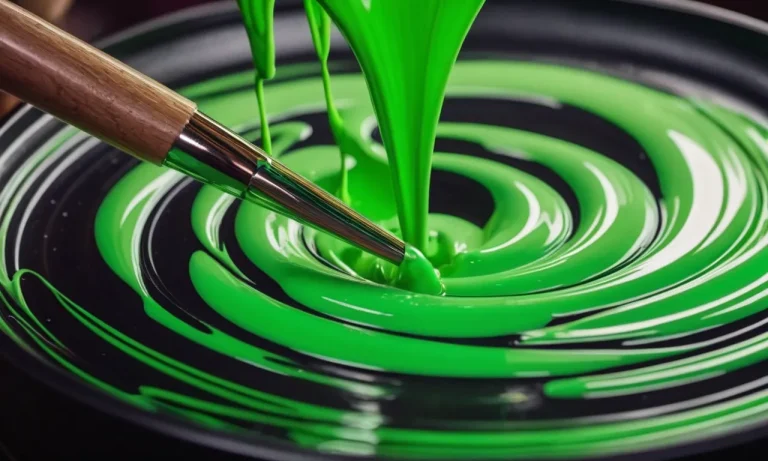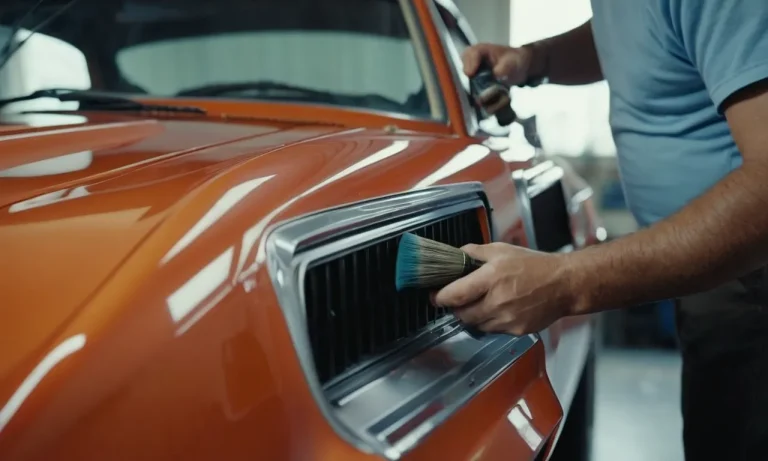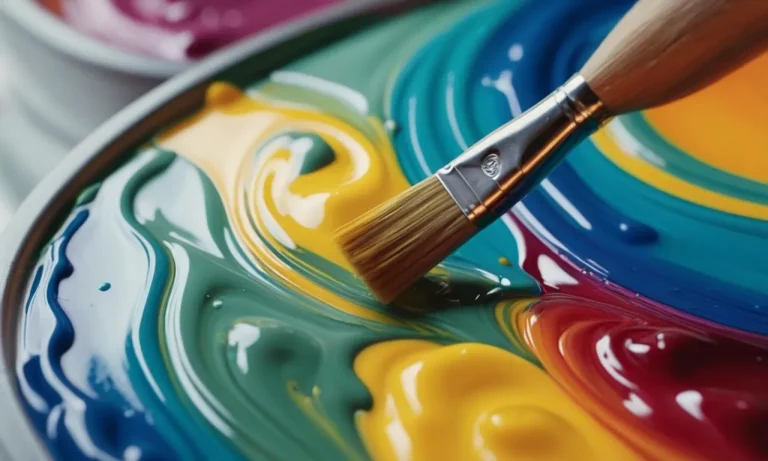Best Ways To Protect Your Car’S Paint
If you want your car to maintain its showroom shine for years to come, learning how to properly care for the paint is essential. A little preventive maintenance goes a long way when it comes to keeping your car’s exterior in pristine condition.
If you’re short on time, here’s a quick answer to your question: Washing regularly, waxing, using paint protection film, keeping the paint out of the sun, and addressing chips quickly are the best ways to protect your car’s paint.
In this comprehensive guide, we’ll discuss several effective techniques to keep your car’s paint looking its best by preventing damage from the elements and normal wear and tear.
Wash Regularly
Regularly washing your car is one of the best ways to protect its paint and keep it looking shiny and new. By removing dirt, grime, and other contaminants, you can prevent them from causing damage to the paint surface. Here are some tips to help you wash your car effectively:
Wash every two weeks
Experts recommend washing your car at least every two weeks. Regular washing helps to remove dirt, bird droppings, and other substances that can cause the paint to deteriorate. If you live in an area with harsh weather conditions or where road salt is used, you may need to wash your car more frequently to protect the paint.
Use the two-bucket method
The two-bucket method is a popular technique among car enthusiasts for washing cars. It involves using one bucket with soapy water and another with clean water for rinsing the sponge or wash mitt. This way, you can prevent dirt and debris from being transferred back onto the car’s surface, reducing the risk of scratching the paint.
Rinse thoroughly
When washing your car, make sure to rinse it thoroughly to remove all the soap and dirt. Leaving soap residue on the paint can cause it to become dull and may even lead to staining. Use a hose with a nozzle attachment to ensure a strong stream of water that can effectively rinse off all the soap suds.
Dry completely
After washing your car, it’s important to dry it completely to prevent water spots and mineral deposits from forming on the paint. Use a soft, microfiber towel to gently dry the car’s surface, making sure to reach all the crevices and corners.
Avoid using regular towels or abrasive materials, as they can potentially scratch the paint.
By following these washing tips, you can help protect your car’s paint and keep it looking great for years to come. Remember, a clean car not only looks good but also maintains its value over time.
Apply Wax
One of the best ways to protect your car’s paint is by applying wax regularly. Wax acts as a protective layer on your car’s surface, shielding it from harmful elements such as UV rays, dirt, and debris. It also gives your car a glossy and shiny appearance, enhancing its overall aesthetic appeal.
Wax every 3-6 months
Experts recommend waxing your car every 3-6 months, depending on the climate and conditions in which you drive. If you live in an area with harsh weather conditions or frequently drive on dusty roads, you may need to wax your car more frequently.
Regular waxing helps maintain the integrity of your car’s paint and prevents it from fading or peeling.
Choose a high-quality wax
When it comes to choosing a wax for your car, it’s essential to opt for a high-quality product. Look for waxes that are specifically formulated for automotive use and provide long-lasting protection. Consider reading reviews or seeking recommendations from car enthusiasts to ensure you select a wax that suits your needs.
Apply wax properly
To ensure maximum effectiveness, it’s crucial to apply wax properly. Start by thoroughly washing and drying your car to remove any dirt or grime. Then, using a soft cloth or applicator pad, apply the wax in circular motions.
Allow the wax to dry according to the manufacturer’s instructions before buffing it off with a clean microfiber cloth. This process helps create a smooth and even protective layer on your car’s paint.
For more in-depth information on car waxing techniques and product recommendations, you can visit websites such as Car and Driver or Autoblog.
Use Paint Protection Film
What is PPF?
Paint Protection Film (PPF) is a transparent, self-healing film that is applied to the painted surfaces of a car to protect it from scratches, chips, and other forms of damage. It is typically made from a strong and durable urethane material that is resistant to UV rays and harsh weather conditions.
PPF is designed to absorb the impact of small debris and prevent it from damaging the paint underneath.
Where to apply PPF
PPF can be applied to various parts of the car, including the hood, fenders, bumpers, side mirrors, and door edges. These areas are most susceptible to scratches and chips caused by rocks, road debris, and other hazards.
By applying PPF to these vulnerable areas, car owners can ensure that their paint remains protected and looking great for years to come.
Pros and cons of PPF
There are several advantages to using PPF to protect your car’s paint. Firstly, it provides an invisible layer of protection that is virtually undetectable once applied. This means that it won’t alter the appearance of your car and will preserve its original paint color and finish.
Secondly, PPF is self-healing, meaning that it can repair minor scratches and swirl marks on its own, keeping your car looking flawless. Additionally, PPF is removable, so if you ever decide to sell your car or change the film, it can be easily taken off without damaging the paint.
However, there are a few drawbacks to consider. Firstly, PPF can be expensive, especially if you choose to cover the entire car. The cost will vary depending on the size of your vehicle and the specific PPF brand and quality.
Secondly, PPF installation requires professional expertise to ensure a seamless and bubble-free application. If not applied correctly, it may lead to visible imperfections or bubbling. Lastly, PPF is not completely foolproof and may not protect against heavy impacts or extreme damage.
It is important to take into account your budget and personal preferences when considering the use of PPF. If you want to provide the ultimate protection for your car’s paint and are willing to invest in quality PPF installation, then it can be a great investment to prolong the lifespan and appearance of your vehicle.
Keep It Out of the Sun
One of the best ways to protect your car’s paint is to keep it out of the sun as much as possible. The sun’s UV rays can cause significant damage to your car’s paint over time, leading to fading, peeling, and cracking. Here are two effective ways to minimize sun exposure:
Park in the shade
Parking your car in the shade is a simple and effective way to protect its paint from the harmful effects of the sun. When you park in the shade, you provide a barrier between your car and the direct sunlight, reducing the intensity of the UV rays that can damage the paint.
Look for shaded areas such as covered parking structures, carports, or even trees that can provide some shade. Additionally, parking in the shade can also help keep your car cooler, reducing the risk of interior damage from extreme heat.
Use a car cover
Using a car cover is another great way to shield your car’s paint from the sun’s harmful rays. A car cover acts as a protective barrier, preventing direct contact between the paint and the sun. It also helps to keep your car clean and free from dust, dirt, and other debris that can cause scratches.
When choosing a car cover, look for one that is made from breathable materials to prevent moisture buildup and allow for proper ventilation. Additionally, make sure to properly secure the cover to prevent it from scratching the paint when it’s windy.
Remember, protecting your car’s paint from the sun is not only about maintaining its appearance but also preserving its value. UV damage can significantly decrease the resale value of your car, so taking these precautions can save you money in the long run.
Address Paint Chips Quickly
One of the best ways to protect your car’s paint is to address paint chips quickly. Paint chips not only affect the appearance of your vehicle, but they can also lead to more serious issues such as rust and corrosion.
By taking prompt action, you can prevent further damage and keep your car looking great.
Inspect frequently for chips
Regularly inspecting your car’s paint for chips is crucial in maintaining its overall condition. Make it a habit to give your vehicle a visual inspection, paying close attention to areas that are prone to chips, such as the front bumper, hood, and side panels.
Small stones, road debris, and even hail can cause chips, so it’s important to be vigilant. By catching paint chips early, you can prevent them from spreading and causing more extensive damage.
Touch up chips properly
When you notice a paint chip, it’s important to address it as soon as possible to prevent it from worsening. One option is to touch up the chip yourself using a touch-up paint kit. These kits are widely available and come with everything you need to properly fill in the chip and blend the paint for a seamless finish.
Follow the instructions carefully and take your time to ensure the best results.
Alternatively, you can also take your car to a professional auto body shop or paint specialist. They have the expertise and equipment to match your car’s paint color precisely and provide a professional touch-up. Although this may involve a higher cost, it can be worth it for a flawless repair.
Remember, addressing paint chips quickly is essential in maintaining the overall appearance and value of your vehicle. It’s a simple yet effective way to protect your car’s paint and keep it looking its best for years to come.
Conclusion
By washing and waxing your car regularly, applying paint protection film on vulnerable areas, keeping it shaded, and touching up any paint chips promptly, you can keep your car’s exterior looking showroom-fresh for many years.
Proper paint care will maintain your car’s aesthetic appeal and resale value. With just a little time invested on a regular basis, you can protect your car’s paint job for the long haul.







